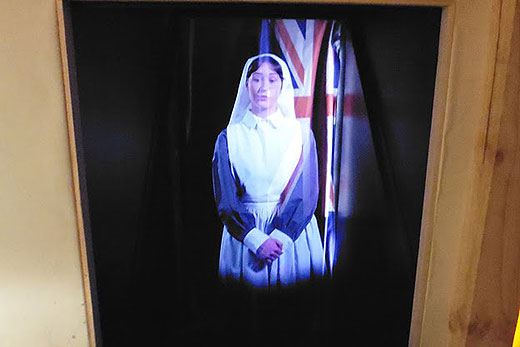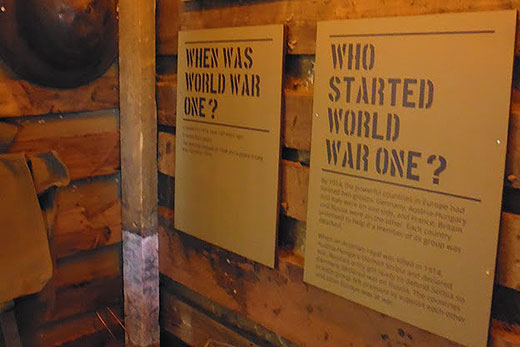Western Bay heroes of World War One take centre stage in Katikati this November with the opening of a multi-sensory exhibition in the new Western Bay Museum.
Presented by Western Bay of Plenty District Council, Unexpected Heroes is a Centennial commemoration of World War One featuring the real-life war experience of five Western Bay of Plenty individuals - a nurse, three soldiers and a child.
Unexpected Heroes officially opens on Armistice Day – November 11 – to commemorate the armistice signed between the Allies of World War One and Germany on November 11, 1918.
The three-month exhibition is being held in the newly renovated old Fire Station in Katikati that will be home to the Western Bay Museum collection.
Following its stint in Katikati, the exhibition will travel to the towns and schools of Western Bay and Tauranga.
Unexpected Heroes is a travelling exhibit presenting local stories and contributions to the Great War. It is aimed at a family audience and was designed, developed and produced by workSpace, a commercial design studio at the Otago Polytechnic in Dunedin.

The exhibit is a fully immersive experience where visitors enter a small section of trench, firmly setting the scene of World War One. Visitors will hear the stories of five unexpected heroes from the Western Bay region through the use of a hologram illusion technique called Pepper's Ghost.
The five individuals represent the millions of ordinary people whose lives were changed by war – be it on the home front or on the battlefield.
Western Bay's ‘unexpected heroes' are: Nurse Mary Eleanor Hobbs from Te Puke; Private Winiata Rewi Tapsell from Maketu; Arnold Watson from Pongakawa; Rifleman George Henry from Katikati; Winifred Best, pupil at No 1 Road School in Te Puke.
Council's Project Manager Blaise Williams says the idea of the multi-sensory exhibition came from a similar concept staged in Christchurch and it fitted perfectly with Council's desire to create a permanent memorial to those who served in the Great War, particularly in view of the Centennial commemorations this year.
The Katikati Town Centre Project Control Group applied to the New Zealand Lotteries Commission to help fund the creation of the exhibit by workSpace.
The Commission contributed $43,000 to the project because it liked the multi-sensory nature of the concept and the fact that it was a multi-generational exhibit with appeal to old and young. The balance of the total cost of $64,500 was given by Council, Katikati RSA, Rotary Club of Katikati and Otago Polytechnic.
WorkSpace's Project Development Manager, Rebecca McMaster says the team at workSpace was excited to take on this unique project.
'It has been a real privilege to bring these important stories back to life for the Western Bay community.
'Visitors can expect to gain a real feeling for the cramped and muddy quarters of trench life, as well as an appreciation of what local people went through during World War One both at home and on the front. We hope the exhibition receives many visitors in the many venues to which it travels in the Western Bay.”
Katikati RSA President and Western Bay Councillor Peter Mackay says the exhibition perfectly reflects Council's aim to have a dedicated World War One Centennial project.
'This is a truly unique project, with nothing quite like it anywhere else in the country. It is a highly specialised and locally relevant insight in to our community's contribution to the war. This is something we can be very proud of,” says Peter.
'It is a project of lasting significance for Council and serves as a poignant reminder of the sacrifices made and the valour of those who served in World War One.
'It's real significance is that we remember and don't ever forget.'”
Biography of Western Bay's `unexpected heroes' are:
Nurse Mary Eleanor Hobbs from Te Puke who left for war on 15 June 1915 on the HS Maheno and she remained in service with the NZ Army Nursing Service. She married in 1918 and changed her name to Dick She was the daughter of Bay of Plenty Minister Reverend John Hobbs. Her name tag from the Maheno and her embroidered signature are held at Te Papa.
Private Winiata Rewi Tapsellvolunteered at the age of 22. He became part of the first Māori contingent to sail for the Dardanelle Peninsula on the Warrimoo. They began by performing engineering tasks as Māori soldiers. On 6 August 1915 the Te Arawa were ordered on their first attack on the Turkish trench. Fighting alongside his uncle, a shell landed beside them and killed his Uncle Ropiha. Winiatia was injured and invalided to London before returning to the Front once recovered.
Arnold Watson working as a farmer in Pongakawa, signed up at the age of 34 with the 19th Mounted Reinforcements. He was drafted into the 15th NZ Company of the Imperial Camel Corps and later was co-opted as a semi-official war artist. He also had cartoons published in Kia Ora Coo-ee, the magazine produced in Cairo for ANZAC troops in the Middle East.
Rifleman George Henry from Katikati volunteered as rifleman and went to France where he was wounded, evacuated and lost his lower leg to defeat life-threatening gangrene. After discharge he resumed working for Tauranga County Council and became roading foreman.
Winifred Best, a pupil of No 1 Road School in Te Puke where 175 pupils at the time gave a concert at Alliance hall to raise funds to send Christmas billies to ex-pupils of the School serving in the War. Fifty billies and 50 YMCA coupons were sent as a result.



0 comments
Leave a Comment
You must be logged in to make a comment.